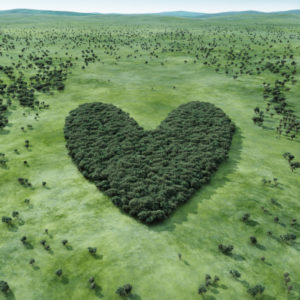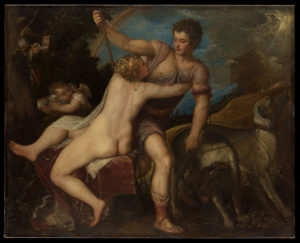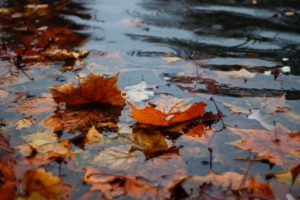(This post is Part I of a three-part series on loving the world inspired by, and including poems from, my newest poetry collection, Pebbles, coming June 1st. See Part II and Part III here.)
I have been on this planet for three and a half decades now, and a lot has surprised me about the human condition–from the unpredictability of the future to how we are all just winging it, trying our best while making a litany of mistakes along the way. From what a miracle life can be to how fragile it is. One day, someone is here, laughing in the doorway; the next day, they are gone.
I have also been surprised as the excruciatingly slow pace of social progress and the stubbornness of behemoth institutions to do any sort of meaningful change. This complacency has become particularly salient when I look at large corporations and political institutions, who seem to do nothing to stop the casual and wanton destruction of the natural world.
It has astounded me to know that honest, kind, hard-working people–smart executives and lawyers–will kiss their family and kids before heading to work for oil corporations who will pay them millions of dollars to lie to government officials at the expense of the planet. I find it hard to comprehend that people like Brazilian President Jair Bolsonaro can see the destruction of the sacred, complex, and diverse ecosystem of the rainforest as some kind of progress, and that if he remains in power, there’s is a good chance the Amazon will collapse entirely.
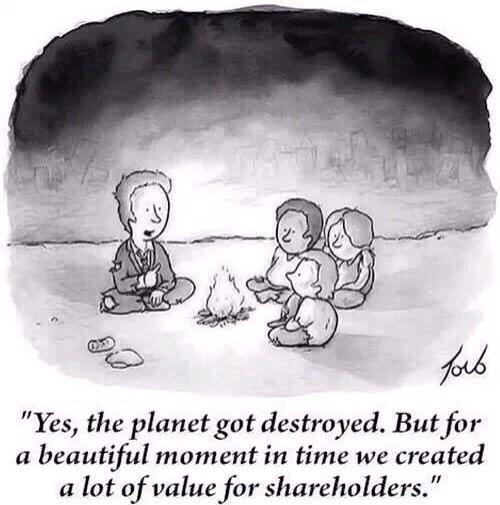
I first learned about climate change as a kid and have since seen very little done to stop it. I have seen a lot of false pledges, empty posturing, and blatant greenwashing. I myself have tried whatever I can to be a more conscious consumer, including turning towards vegetarianism, using re-usable everything and recycling everything else, biking to places, taking public transport, and all of those other things we are told to do to save the planet. I then get to see tens of thousands of my tax dollars go to the US military, a bigger polluter than more than 100 countries combined, along with my own money in the bank going towards those same lying fossil fuel companies.
The short-sightedness and selfishness of our prevailing way of life breaks my heart on a daily basis. Every day, we hear more about the lack of progress in slowing the extinction of species, the poisoning of our waters, and the pollution of our air. The world has lost two-thirds of its wildlife in the past 50 years, WHO data shows that almost the entire global population (99%) breathes air that exceeds WHO limits for levels of pollutants in the air, and on top of that, over half of U.S. waters are too polluted to swim or fish in. Humans are the sole cause of the current Sixth Extinction, which we get to see on a daily basis as the Great Barrier Reef collapses and fish populations plummet.
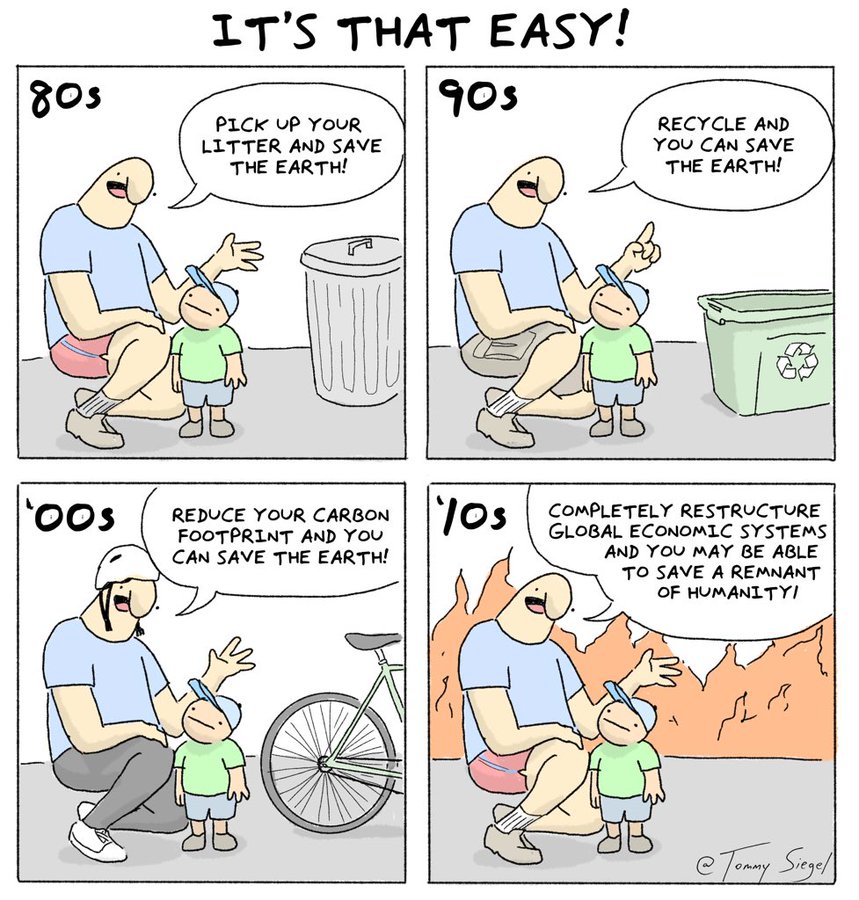
Living in California, we now have three seasons: wet season, dry season, and fire season. It’s enough to make anyone go crazy, and indeed people are, as psychologists have noted the rise of so-called “climate anxiety.”
And so, one of the biggest questions I keep asking is “Why?” It’s a question I love to engage with in my own classes and workshops, where I have people get in groups and ask themselves a very simple question: Why is the Western world so extremely casual about wanton environmental destruction?
Because if we are to come to a solution about saving the world from human destruction, we have to look deeply at why we have been so complacent for so long. We have to get to the true root of the issue.
Often, people cite the answer to that question as coming from philosophy, science, or religion. Ever since the book of Genesis declared “Let us make mankind in our image, in our likeness, so that they may rule over the fish in the sea and the birds in the sky, over the livestock and all the wild animals, and over all the creatures that move along the ground,” many peoples throughout time have put humans above all other creatures in the world, seeing human dominion as a divine destiny.
But the myth of man’s specialness is not just expressed in religion. Even before Descartes wrote “I think, therefore I am,” humans have believed that our superior brain power makes us a superior species. Science also tends to confirm humans as the top of the food chain due to our brains being more complex than any other animals on the planet.
But if we really want to get into the root of it all–into why this view is so bad and why it has persisted for so long–I believe the explanation is tied to the illusion of separation. The fundamental belief is that “we” and “I” are somehow separate from “the world” and “other,” and, therefore, violence and destruction waged against something like a mountain or a forest is not considered remotely the same as violence to ourselves.
Albert Einstein called this “a kind of optical delusion” of our consciousness, which acts as a prison that we must break free of to widen “our circle of compassion to embrace all living creatures and the whole nature in its beauty.” This illusion of separation is deeply embedded in our very language, as we refer to ourselves as a subject (“I”) and the world as an object (“it”); this subject/object duality is the root of much of the violence and social ills in the world.
This illusion creates a kind of hubris that leads us to believe we are somehow above the land and, therefore, are not affected by its destruction. This illusion manifests in other fundamental dualities, that of mind vs. matter, spiritual versus material, or even the idea that “human” and “nature” are not part of one whole. We think if we are distinctly separate from the living and breathing natural world, we give ourselves an illusion of safety, that somehow our destruction of the waters and airs around us will not affect us.
Since the root cause of our casual disregard is separation, the solution is to see our inherent connection to all that is–to understand that this “environment” we are always talking about is the same living and breathing apparatus as us. As Llewellyn Vaughan-Lee so marvelously put it, “the world is not a problem to be solved; it is a living being to which we belong. The world is part of our own self, and we are a part of its suffering wholeness. Until we go to the root of our image of separateness, there can be no healing.”
These ideas inspired this brief poem that I included in Pebbles:
may i feel myself in the world
may i feel the world in memay you see yourself in me
may i see myself in you
The poem is a prayer, and, the more I think about it, the more I see it as a prayer for peace. A prayer for us to see everyone on this planet as the same as us, as brothers and sisters, and as one human race. A prayer for us to truly feel a sense of embodied presence and connection with the land around us and to see caring for the world as caring for ourselves.
Seeing our connection doesn’t just mean recognizing the massive web of relationships that ties it all together. It means understanding that we arise together, too. Buddhists refer to this understanding as pratityasamutpada, which is often translated as “co-arising,” “emergent co-arising,” “reciprocal causality,” “dependent co-origination,” or “mutual causality.” Pratītyasamutpāda is the the basic idea is that you cannot have any one thing without a litany of other things, hence the phrases “This is, because that is.” and “This is not, because that is not.”
The reality of reciprocal causality is what Martin Luther King Jr. was referring to when he said, “We are caught in an inescapable network of mutuality, tied in a single garment of destiny,” as well as what the naturalist John Muir meant when he said, “When we try to pick out anything by itself, we find it hitched to everything else in the universe.”
Pratityasamutpada is also quite similar to the Nguni Bantu term ubuntu (“I am because we are”) or the Lakota phrase mitákuye oyás’iŋ (“all are related”), which both describe the importance of recognizing our relationships with each other and the world and of seeking to live in a harmonious relationship with the past, present, and future.
Whatever you call it, the first step to becoming caretakers of the world is to see our mutual causality, the interconnected interdependent interrelated nature of reality that shows us that human and nature are one and that we must take care of our counterpart if we are to survive. If we realize the truth of This is because that is and This is not, because that is not, we will soon discover that we humans exist because the natural world exists, and we will not longer exist if the plants, trees, and animals do not.
If we are to save ourselves, we must save the world. In saving the world, we save ourselves.
So, how do we cultivate that level of awareness? By paying attention. By meeting this moment with loving awareness–the topic of Part II of this series. See you next week.

